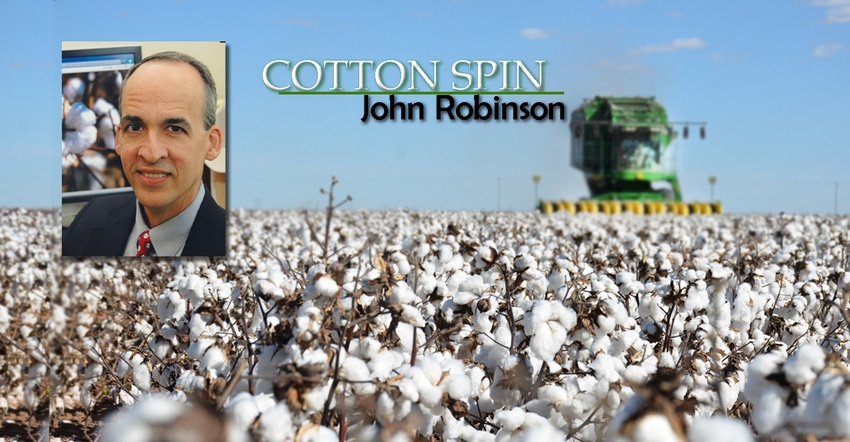
USDA’s October WASDE report for cotton showed net gains in world stocks mostly from demand-side decreases to the 2022/23 world old crop cotton balance sheet. Beginning stocks were raised 570,000 bales, month over month, mostly in China (+340,000), Australia (+150,000) and India (+60,000). The increase in Chinese beginning stocks reflected downward revisions in historical Chinese consumption, so this was really a (negative) demand adjustment. World production was 400,000 bales fewer compared to last month, mostly from continued decreases to flood-ravaged Pakistan. Forecasted Indian production was unchanged, month over month.
The demand side of the world cotton balance sheet reflected expectations of slowing. The world trade categories were both reduced roughly a million bales compared to September. World consumption was cut a whopping 3.03 million bales, mostly in China (- 1.0 million), India (-1.0 million), Pakistan (-500,000), Turkey (-200,000) and Vietnam (-100,000).
To summarize, the small cut in world production was outweighed by the cuts on the demand side, leading to a 3.12 million bale increase to world ending stocks, month-over-month. This adjustment is fundamentally price negative in the size of the monthly decline, and the slowing demand highlighted in these numbers will likely be construed as bearish.
The U.S. 2022/23 crop cotton balance sheet saw minor adjustments. On the supply side, U.S. production trimmed very slightly owing to a one-pound per acre reduction in average all cotton yield per acre. On the demand side, domestic use was unchanged while forecasted U.S. exports were lowered by 100,000 bales, month over month. This jibes with expectations of lower foreign consumption and reduced world trade, in addition to the relatively poor U.S. export sales data in recent months. Anyway, the bottom line of the U.S. balance sheet was a 100,000 bale increase in U.S. ending stocks, which is relatively neutral, while remaining reasonably bullish in the resulting level.
For additional thoughts on these and other cotton marketing topics, please visit my weekly on-line newsletter at http://agrilife.org/cottonmarketing/.
About the Author(s)
You May Also Like




